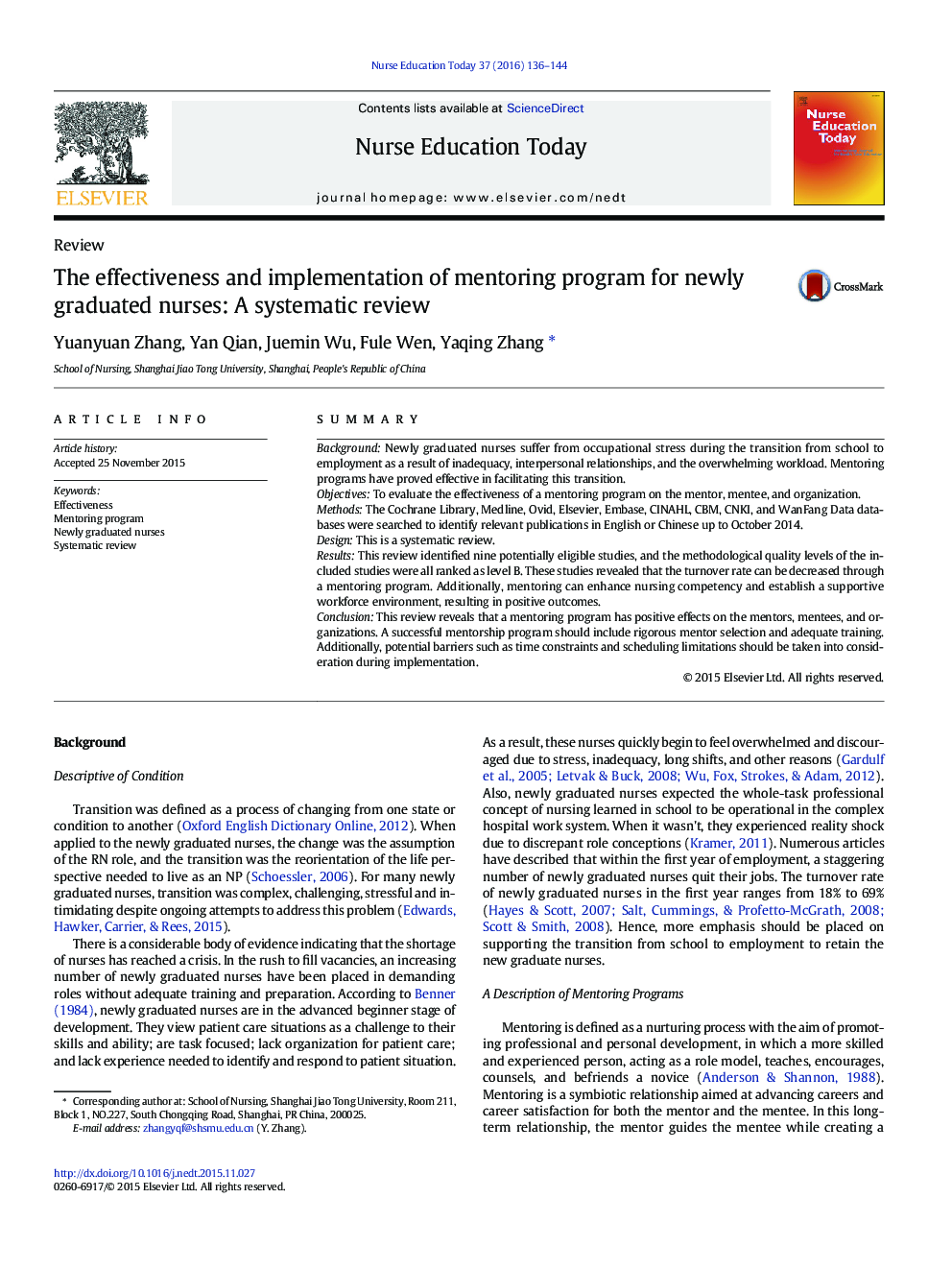| کد مقاله | کد نشریه | سال انتشار | مقاله انگلیسی | نسخه تمام متن |
|---|---|---|---|---|
| 368014 | 621555 | 2016 | 9 صفحه PDF | دانلود رایگان |
• This review focused specifically on mentoring program for new GNs and distinguished clearly between precepting and mentoring.
• The successful implementation of mentoring should take a lot things into consideration, include mentor, mentee and barriers.
• Mentoring program has been proved to have positive effects on mentor, mentee and the organization.
• The effectiveness of mentoring on job satisfaction, professional socialization, occupational stress are still unclear.
SummaryBackgroundNewly graduated nurses suffer from occupational stress during the transition from school to employment as a result of inadequacy, interpersonal relationships, and the overwhelming workload. Mentoring programs have proved effective in facilitating this transition.ObjectivesTo evaluate the effectiveness of a mentoring program on the mentor, mentee, and organization.MethodsThe Cochrane Library, Medline, Ovid, Elsevier, Embase, CINAHL, CBM, CNKI, and WanFang Data databases were searched to identify relevant publications in English or Chinese up to October 2014.DesignThis is a systematic review.ResultsThis review identified nine potentially eligible studies, and the methodological quality levels of the included studies were all ranked as level B. These studies revealed that the turnover rate can be decreased through a mentoring program. Additionally, mentoring can enhance nursing competency and establish a supportive workforce environment, resulting in positive outcomes.ConclusionThis review reveals that a mentoring program has positive effects on the mentors, mentees, and organizations. A successful mentorship program should include rigorous mentor selection and adequate training. Additionally, potential barriers such as time constraints and scheduling limitations should be taken into consideration during implementation.
Journal: Nurse Education Today - Volume 37, February 2016, Pages 136–144
